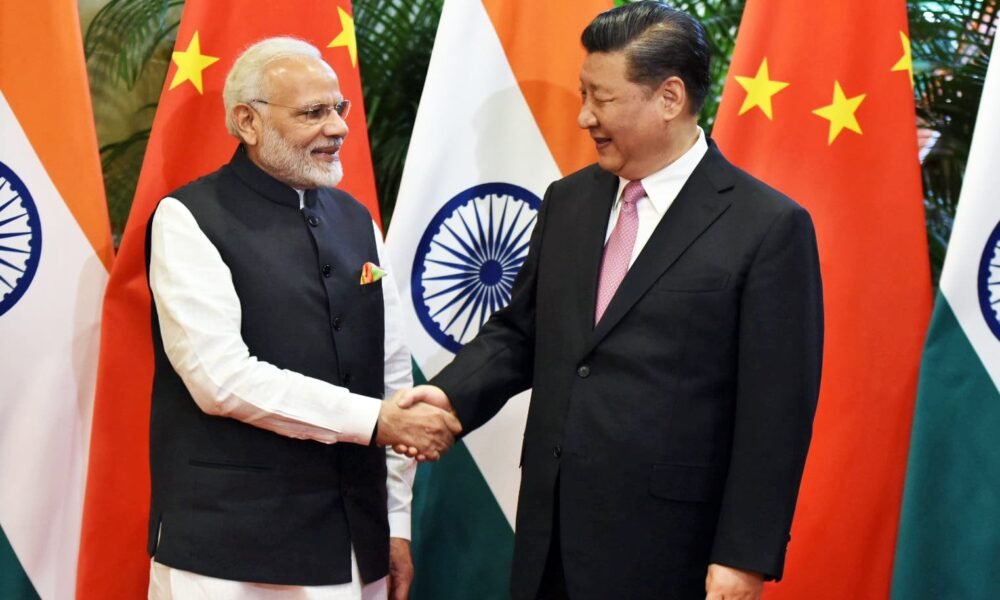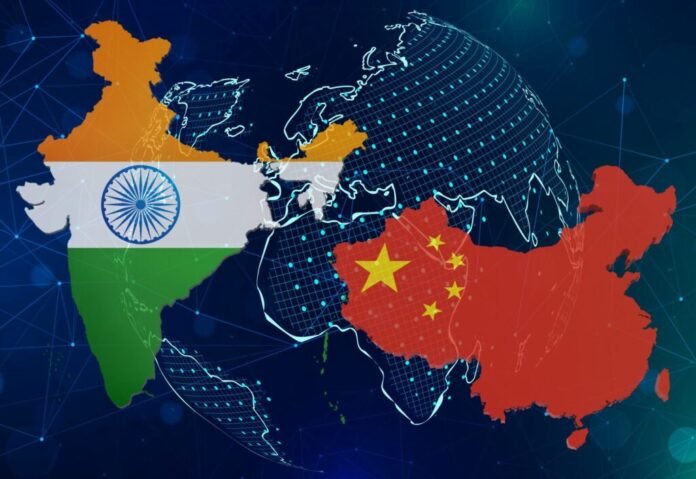India and China, the two most populous nations and Asia’s foremost powers, are locked in a complex geopolitical rivalry, with their defence capabilities a focal point of intense scrutiny. While India is aggressively pursuing a military ‘reboot’ to achieve strategic autonomy, China’s People’s Liberation Army (PLA) continues its rapid, state-directed modernisation to project power and reshape the regional security landscape. A comparison of their defence capabilities reveals a significant numerical and technological gap, with China holding a decisive edge, but also highlights India’s critical qualitative strengths in experience, training, and strategic partnerships.
Disparity in Defence Budgets and Industrial Base
The most fundamental difference lies in the resources each nation allocates to its military. China’s defence budget for 2025 is estimated at over $230 billion, more than three times India’s projected budget of approximately $85 billion. This substantial and consistently rising funding stream allows China to invest heavily in advanced technologies and maintain a larger, more modern force. While India’s defence spending has also increased, a larger portion is consumed by salaries, pensions, and maintenance, leaving less for crucial capital acquisitions.
Compounding this is the difference in their defence industrial complexes. China has developed a large and sophisticated defence manufacturing base, enabling it to produce a wide range of advanced military platforms, often through a strategy of reverse engineering and espionage. While this approach can lead to reliability issues and dependence on foreign intellectual property, it enables rapid scaling of production. In contrast, India’s defence sector, while making significant strides through the ‘Aatmanirbhar Bharat’ initiative, still struggles with technological dependencies for high-tech components such as jet engines and advanced sensors. The success of India’s indigenous programmes, such as the LCA Tejas and INS Vikrant, is undeniable, but production scales and development timelines lag behind China’s rapid pace.
China’s defence budget for 2025 is estimated at over $230 billion, more than three times India’s projected budget of approximately $85 billion. This substantial and consistently rising funding stream allows China to invest heavily in advanced technologies and maintain a larger, more modern force
Asymmetric Naval Power
The naval comparison is stark. China’s People’s Liberation Army Navy (PLAN) is now the largest navy in the world by fleet size, with more than 370 vessels, a number projected to reach 435 by 2030. It operates three aircraft carriers and possesses a massive fleet of modern destroyers, frigates, and more than 80 submarines, including 12 nuclear-powered ones. This rapid expansion allows China to project power far beyond its coastal waters into the Indo-Pacific and Indian Ocean Region (IOR).
India’s navy, while modernising, is numerically smaller, with one operational indigenous aircraft carrier, the INS Vikrant, and a smaller fleet of destroyers and frigates. However, India’s naval capabilities are shaped by different operational priorities and significant strategic advantages. India’s geography in the IOR and its network of alliances, particularly through the Quad (with the US, Japan, and Australia), give it a strong strategic position. The Indian Navy is well-positioned to monitor and, if necessary, interdict Chinese activity in the region, particularly at key maritime chokepoints like the Strait of Malacca.
Air Power: Quality versus Quantity
In air power, China maintains a quantitative advantage, with the People’s Liberation Army Air Force (PLAAF) operating a larger fleet of aircraft, including a greater number of advanced fighter jets. China also possesses fifth-generation stealth fighters like the J-20, while India’s indigenous fifth-generation programme (AMCA) is still in development. However, recent reports from organisations like the World Directory of Modern Military Aircraft (WDMMA) suggest that India’s Air Force has a more balanced and capable fleet relative to its size, ranking third globally in 2025, ahead of China. India’s strengths lie in its highly experienced and trained pilots, its diversified fleet of modern aircraft (including Rafales and Su-30 MKIs), and the strategic positioning of airbases along the Line of Actual Control (LAC). Chinese jets operating from high-altitude airbases in Tibet face operational challenges, requiring them to operate with reduced fuel or payload capacity.
China has developed a large and sophisticated defence manufacturing base, enabling it to produce a wide range of advanced military platforms. In contrast, India’s defence sector still struggles with technological dependencies for high-tech components such as jet engines and advanced sensors
Land Forces and Technological Frontiers
In land power, China’s PLA Ground Force (PLAGF) is the world’s largest, though it has been undergoing restructuring to become a more mobile and technologically advanced combined-arms force. China possesses a larger and more modern fleet of armoured vehicles and advanced missile systems, including hypersonic weaponry. India’s army, though numerically smaller, has unparalleled combat experience in high-altitude and rugged mountainous terrain, a crucial advantage in any potential border conflict. The Indian Army is also leveraging AI and automation to enhance its ISR capabilities.

The emerging fields of cyber and space warfare are where China’s lead is most pronounced. China has invested significantly in these areas, establishing dedicated units for cyber, space, and electronic warfare. Its cyber capabilities and vast network of military and dual-use satellites outpace those of India, though India is actively developing its own capabilities. China’s military-civil fusion strategy further accelerates its progress in these and other cutting-edge areas, integrating civilian technological advancements into military applications.
The World Directory of Modern Military Aircraft report suggests that India’s Air Force has a more balanced and capable fleet, ranking third globally in 2025, ahead of China. India’s strengths lie in its highly experienced and trained pilots, its diversified fleet of modern aircraft, and the strategic positioning along the LAC
A Nuanced Power Dynamic
While a simple statistical comparison suggests China has a clear quantitative and technological advantage, this assessment is incomplete. Several critical factors complicate this picture. India’s military, though facing budgetary constraints and modernisation challenges, benefits from extensive combat experience and a highly trained force. China’s PLA, in contrast, has not been tested in large-scale combat since 1979, raising questions about its actual operational effectiveness and readiness, especially in complex joint-service operations.
Furthermore, India’s strong alliances with Western powers, including the Quad, provide access to advanced technology, intelligence sharing, and strategic support, acting as a significant counterbalance to China’s growing military might. Ultimately, while China’s massive investment and rapid modernisation present a formidable long-term challenge, India’s strategic advantages, operational experience, and strengthening alliances suggest a more nuanced and complex power dynamic than raw numbers alone would indicate.
Despite its resource limitations, India’s defence strategy is characterised by its strategic depth and asymmetric strengths. The Indian military’s extensive experience in counter-insurgency and high-altitude warfare provides a qualitative edge that China’s largely untested PLA lacks. India’s growing network of defence cooperation and strategic partnerships, including with the Quad nations, enhances its military capabilities through intelligence sharing, joint exercises, and access to advanced technologies. While China relies heavily on its technological and numerical superiority, India’s strategic alliances and battle-hardened forces offer a robust counterbalance, suggesting that in a potential conflict, India’s resilience and tactical proficiency could significantly challenge China’s presumed dominance.
–The writer is Assistant Professor, ICFAI School of Liberal Arts, ICFAI University, Jaipur. The views expressed are of the writer and do not necessarily reflect the views of Raksha Anirveda






